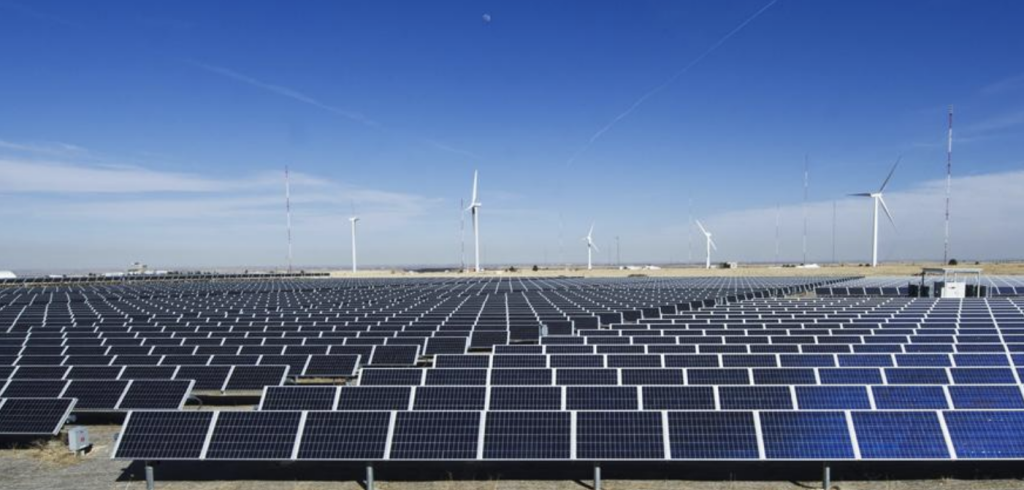Stylianos A. Sotiriou, PhD, is a political scientist and research fellow at the Turkish & Eurasian Studies Lab at the University of Piraeus in Athens, Greece.
This piece derives from a publication in Eurasian Geography and Economics.
High technology and the green transition are becoming increasingly inseparable. At the same time, critical raw materials like Rare Earth Elements (REEs), have also risen to prominence. The automotive industry, defense, electronics, the information sector, medicine, nanotechnology, oil extraction and refining, optics, solar cells, and wind turbines all making use of REEs.
The recent wave of globalization has resulted in the West controlling the most central nodes of the global economy. Yet when it comes to REEs, China dominates the global supply, with Russia already holding a strategic niche—albeit as only an emerging actor. Together, China and Russia enjoy an insurmountably powerful position vis-à-vis the West, with the latter not only being the prime consumer of their supplies but also lagging considerably behind in terms of developing its own production and finding alternative suppliers.
Of course, persuading China and Russia to act in unison is not easy. Historically, issues like the battle for influence in Central Asia, the Chinese illegal migration in Russia’s Far East, and the unstable collaboration in the Arctic, have destabilized the foundations of bilateral cooperation.
But these issues have not prevented bilateral rapprochement within the BRICS, an influential international organization, with further momentum expected with respect to sensitive geopolitical issues like Ukraine and Taiwan. Indeed, China has empathized with Russia on Ukraine, and Russia has identified with China on Taiwan. Both parties have unequivocally stated that their present-day relations surpass in importance the political and military alliances of the Cold War era and, in essence, form a “no limits” partnership.
As for international trade in REEs, since the 1990s, the architect of the Chinese economic miracle, Deng Xiaoping, had stated: “The Middle East has oil, and China has rare earths.” Accordingly, the Baotou High-Tech industrial development zone was created in Inner Mongolia, and the Bayan Obo, the country’s largest mine, was designated as the “Treasure Mountain.” Today, the state-owned megacompany China Rare Earth Group handles the biggest part of the country’s production. Moreover, China has acquired irresistible control over pricing, driving out competitors and deterring new entrants in a successful effort to monitor and control the global production and flows, or, put another way, to exert a panopticon effect on the global REEs supply chain.
Russia also has a considerable, yet not comparable, footprint in the REEs field. The Lovozersky GOK LLC (LGOK) in Murmansk oblast is the country’s only miner and processor of loparite ore, from which rare earth metals are extracted. Since February 2022, the Russian state has centralized control by transferring the property to the state nuclear corporate entity Rosatom. Meanwhile, Russia’s potential in the broader field is exemplified by the Tomtor field in the north-east of the country (Yakutia), a “virtually inexhaustible source” according to some commentators.
Although Russia’s position in the global REEs supply chain is not as domineering as China’s, it nonetheless occupies a central place. In particular, for REEs to be fully commercial, the primary deposits need to be processed by a separation plant. Outside China, there are only two such plants: one in Malaysia, and another in Estonia. The latter, although run by a Canada-listed company, it has more than 2/3 (or 70%) of its feedstock coming from Russia. So, as China supplies 78% of the United States (US) demand and 98% - 99% of the European Union (EU) one, Russia is in a critical position to control a large share of the remainder of supplies through the separation plant in Estonia.
Can the West possibly escape this predicament?
The US, for one, has emphasized cooperation with Western REEs producers, such as Australia, while also prioritizing scientific research in the area. Laboratories of the Department of Energy (DoE), like the Ames Laboratory in Iowa and the Idaho National Laboratory, have made progress in recovering REEs. The DoE has also released a Request for Information on the feasibility of a full-scale REEs and critical minerals extraction and separation refineries using unconventional resources, aiming to strengthen the domestic supply chain and to contribute to the next generation of clean energy technologies.
On a parallel track, the EU has passed the Critical Raw Materials Act (2023) and the European Chips Act (2023), seeking to produce its own strategic raw materials and microchips. Moreover, agreements with other REEs suppliers have also taken center stage, with a Free Trade Agreement with New Zealand entering into force since May 2024, and negotiations with Chile, Mexico, India, Australia, and Indonesia underway.
Last but not least, Australia has noteworthy reserves and mine production. Mount Weld is the country’s flagship mine, with big investments scheduled for its upgrade. However, even the revamped mine is not expected to compete with China’s production, which will remain orders of magnitude greater. Likewise, several high-potential, still unproven, exploration-stage projects depend on China’s separation plants for their full development, with agreements for the dispatch of the primary deposits already signed between Australia and China.
It is fair to say that the West is a latecomer to the REEs market, making its prospective autonomy and security highly challenging. The lead time for a mine to be put into operation is a decade at best. Furthermore, the environmental challenge is too menacing to ignore. Even when advanced technology is used, excessive REEs mining causes landslides, clogged rivers, environmental pollution emergencies, and large-scale accidents and catastrophes. On top of these dangers, both the recovery and recycling of REEs require numerous technical, organizational, economic, and environmental problems to be addressed. According to a 2015 European Rare Earths Competency Network report, it “will be challenging (for the West) to create recycling flow sheets” that “can compete—in terms of both price and quantity—with Rare Earth Materials produced from primary sources in China.”
In short, in the age of high- and green-tech, China dominates the global REEs economic network, whereas Russia occupies a strategic, if so far secondary, niche. The West’s unpreparedness to have alternatives in play that would assist in reducing its vulnerability has only made the situation more intense, with changes in the medium term highly unlikely.
A different dimension of international security is now coming to the fore, in which non-Western actors hold the cards in a critical area for global society, an area that only acquires greater significance as geopolitical fault lines intensify around sensitive issues like Ukraine and Taiwan.



